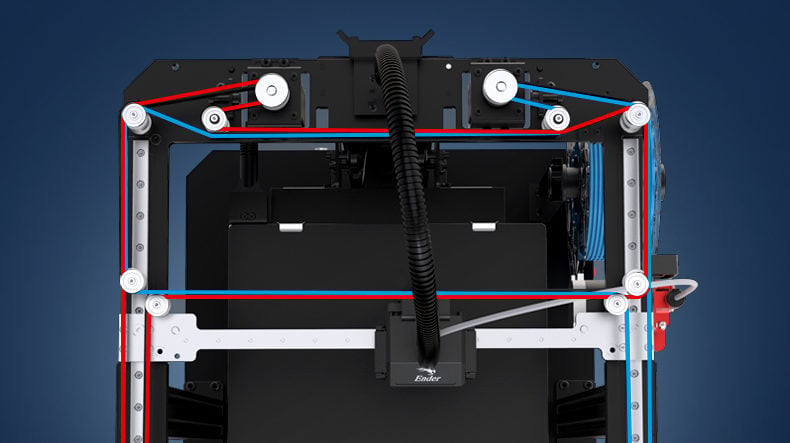Creality just announced an impressive-looking new 3D printer that’s bound to make some waves if it lives up to the lofty marketing claims that accompany it.
The Creality Ender 7 is the company’s latest entry into the massively successful Ender lineup, a portfolio of products often compared to Prusa Research’s printers as a budget option for those willing to get their hands a little dirty. This new entry comes with a zany video that seems a little at odds with the product on offer but is fun to watch anyways. It’s linked below.
The Ender 7 stands out among many of Creality’s other Ender series printers with some really impressive features: CoreXY architecture, linear rails, and – according to Creality – a print speed of 250mm/s.
With a 250 x 250 x 300 mm build volume, the Ender 7 comes in with less volume than the Ender 6 and Ender 3 Max – odd that the promo video’s sweet Mars-mad model demands a bigger rocket. Still, that’s nothing to scoff at; it’s plenty of room to work with and more than the Ender 3 V2, Pro, and many of our favorite printers.
Around that build volume, Creality has crammed in some impressive hardware. CoreXY architecture is widely sought for its enabling of fast, high-quality printing. The printer follows past Creality CoreXY machines in the Ender 6 and CR-30, continuing a trend for this complex kinematic in consumer 3D printers (we even have a list).
Because CoreXY operates with a system of two long, stacked belts – each independently responsible for diagonal motion, but working together, axial – belt tensioning and placement of the pulleys are important. If done poorly, it can lead to issues and less than desirable results.

Creality has an answer to the tension problem, too, though, by implementing a high-rigidity motion system into the Ender 7: linear rails. Bearing-block linear rails are often considered the ideal motion guide. They’re incredibly stiff, making them ideal for a demanding system like CoreXY, yet still able to swiftly glide across an axis. In the past, we’ve seen budget-oriented brands such as Creality steer clear of pricier linear rails. Perhaps Creality has worked out a stellar supply chain or is diverging from their usual affordable prices. We don’t know yet because the Ender 7’s marketing material doesn’t include its price point – a move that reminds us of high-priced professional systems.

All this builds up to a very tempting offer from Creality, barring the price, but with some accompanying claims that raise our collective eyebrow. Creality claims that the Ender 7 reaches print speeds of 250 mm/s. That’s faster than any consumer-priced 3D printer we can think of and 50 mm/s faster than the company’s already-unbelievable claim for the Ender 3 at 200 mm/s – which also happens to be the same speed Prusa claims for the i3 MK3S+.
We haven’t gotten our hands on the printer just yet, so we can’t speak to the quality of its hardware or validity of Creality’s claims, but the Ender 7 will be quite the industry achievement if it holds up.
License: The text of "Creality Reveals the Ender 7 – a CoreXY 3D Printer With Some Big Claims" by All3DP is licensed under a Creative Commons Attribution 4.0 International License.